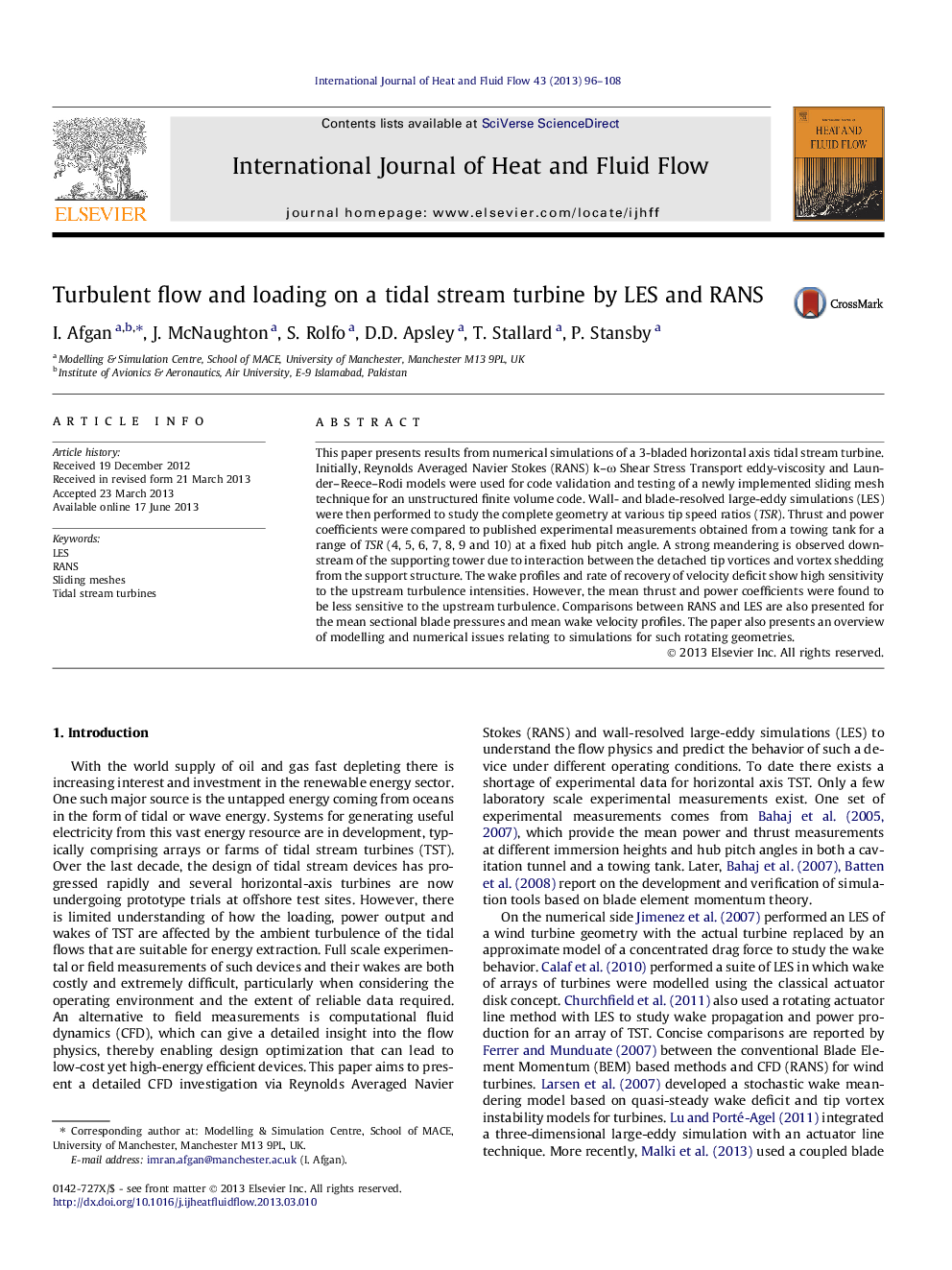| Article ID | Journal | Published Year | Pages | File Type |
|---|---|---|---|---|
| 655280 | International Journal of Heat and Fluid Flow | 2013 | 13 Pages |
Abstract
This paper presents results from numerical simulations of a 3-bladed horizontal axis tidal stream turbine. Initially, Reynolds Averaged Navier Stokes (RANS) k-Ï Shear Stress Transport eddy-viscosity and Launder-Reece-Rodi models were used for code validation and testing of a newly implemented sliding mesh technique for an unstructured finite volume code. Wall- and blade-resolved large-eddy simulations (LES) were then performed to study the complete geometry at various tip speed ratios (TSR). Thrust and power coefficients were compared to published experimental measurements obtained from a towing tank for a range of TSR (4, 5, 6, 7, 8, 9 and 10) at a fixed hub pitch angle. A strong meandering is observed downstream of the supporting tower due to interaction between the detached tip vortices and vortex shedding from the support structure. The wake profiles and rate of recovery of velocity deficit show high sensitivity to the upstream turbulence intensities. However, the mean thrust and power coefficients were found to be less sensitive to the upstream turbulence. Comparisons between RANS and LES are also presented for the mean sectional blade pressures and mean wake velocity profiles. The paper also presents an overview of modelling and numerical issues relating to simulations for such rotating geometries.
Keywords
Related Topics
Physical Sciences and Engineering
Chemical Engineering
Fluid Flow and Transfer Processes
Authors
I. Afgan, J. McNaughton, S. Rolfo, D.D. Apsley, T. Stallard, P. Stansby,
